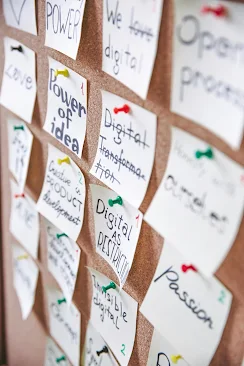“Are you sure you know what you’re doing?”
That question used to coil around my spine every time I grabbed a screwdriver. It echoed back to a certain family gathering: five relatives, one oak coffee table, and me—eye‑rolling, ready to move the thing already. I marched backward, table in hand, straight into a doorway too narrow by an inch. Cue the cousin’s smirk:
“It helps to not be stupid.”
For years I let moments like that shrink me. I was the kid who made her own drum and got labeled flighty, weird, too loud, too much. Then grad school handed me a word—neurodivergent—and fifteen years later I realized it wasn’t a handicap; it was my upgrade patch.
How I Work (and Why It Matters)
Patrick Lencioni’s Six Working Geniuses framework breaks teamwork into a W I D G E T:
Wonder | Invent | Discern | Galvanize | Enable | Tenacity.
Most of us sparkle at two, grind through two, and flail at the last pair.
My sparkle: Wonder + Invention.
I ask “Why?” until the paint peels, then MacGyver a new way forward.
My grind: Tenacity + Galvanize—I’ll finish and help the team rally, but expect odd tools and loud playlists.
My flop: Discernment + Enable—I tend to 'go underground' when I'm in the zone, and may miss a detail... or twelve.
Mapping those geniuses flipped my script from “hard way” to “my way.”
I’m not a mis‑wired dreamer stuck in a 'doer' role, like in Lencioni’s book; I’m a tech‑minded Product Owner who automates workflows, scripts servers, and, yes, builds laptops for fun.
Receipts, Please
-
2009 - Swapped a dead SATA drive in my Dell XPS. No workshop, just YouTube and stubborn joy.
-
2018 - Dual‑booted Ubuntu's Disco Django distro, and wrote gnarly bash scripts to tame Wi‑Fi, spun up a personal backup server.
2022 - Successfully ran Linux Ubuntu + Windows 10 OS on my Lenovo Yoga C390.
-
2025 - Provisioned an Ubuntu 24.05 VM, learning Docker + DevOps on my own box.
Just completed! Built a DIY Framework 16, and configured it for dual‑booting Linux Ubuntu 24.04 LTS + Windows 11, color‑coded USB‑C cards and all.
Every project proves: when I lean into Wonder + Invention, I ship. When I try to copy “normal,” I stall.




